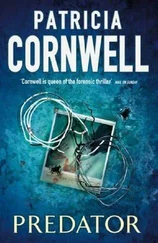“And his values?” I ask.
“Typical for entangled leatherbacks. Mild hypernatremia, but he should be fine. Until he encounters some other human detritus or a boat that kills him.”
“I can understand how you feel about it. . . .”
“You really can’t,” she says.
“I need to ask if you saved the fishing gear.”
“You can have it.” She reaches inside a ski bag.
“Based on your expertise, can you reconstruct what happened?”
“Same thing that always does to these animals,” she replies. “They run into a vertical line, freak out and start spinning around, and get wrapped up in it. The more they struggle, the worse it gets, and in his case, he was dragging a heavy pot and a body for God knows how far.”
“And dragging the buoy.”
“Yes. Dragging that, too.” She hands me a transparent plastic bag that contains tangled monofilament, several leads, and rusty hooks.
“What makes you assume the body and pot were dragged? It seems you’re assuming they weren’t originally where they are now. Any reason to suppose he might have gotten entangled here, where he was found?” I label the bag with a permanent marker.
“Leatherbacks are in perpetual motion,” she answers. “The monofilament probably was entangled with the buoy line. What we do know for a fact is he hit the fishing lines, and his left flipper got wound up, but he’s programmed to keep swimming. The more he swam, the tighter the lines wrapped around him, it would seem. By the time we got to him, he could barely move his left flipper, and he was going under.”
“Any estimate of distance based on how fast leatherbacks can swim?” I ask.
“We could have this conversation later.” She barely looks up at me.
“Any information I can get now is really important,” I say firmly. “It could help us determine where the body might have entered the water.”
“That person is gone. He’s not.”
“This could be a homicide investigation. I don’t think anyone wants to interfere with that.”
“All I can tell you is the top speed for a leatherback is about twenty miles per hour,” she replies flatly, “but no way he was going anything close to that dragging what was attached to him. It’s not possible to say where he might have run into the line except that I’m thinking he didn’t get very far after he did. Maybe a few miles at most, until he was running out of steam and getting pulled down by his load, barely able to keep his head above water.”
“It’s not likely he got entangled in the open ocean.” I scan the horizon, the outer harbor separated from the open Atlantic Ocean by some sixty-five miles of bays, peninsulas, and islands. “It’s too far from here.”
“Absolutely no way,” she agrees. “I’m estimating hours, not even a day, based on his injuries and what good shape he’s in. There’s nothing wrong with him that saltwater won’t heal. Just moderate abrasions to this one flipper, a mild abrasion to the dorsal head, as you can see. Don’t confuse the pink spot.”
Her latex-gloved hand pats a pinkish splotch on the top of his dark mottled head, and she seems to have relaxed a little, to find me not quite as objectionable.
“Each leatherback has a unique fingerprint,” she explains. “We actually can ID one of these by the spot on its head; not sure what it’s for, but maybe a sensor of sorts that detects light or helps the animal determine its location in the ocean.”
“Let me look at his injuries. And then I promise I’ll get out of your way.”
She pulls back the wet sheet from his neck, and I can smell his clean fishy smell as I get close to him, just inches from his restrained left flipper, which is at least six feet long. Then I smell the strong ammonia of urine.
“That’s a good thing.” She obviously smells it, too. “The more alert and active, the better. We want all-systems-go. Like I said, nothing all that serious. The worst offender is this. Part of a barnacle that’s embedded in this ridge right here. I was about to extract it.”
She shows me a fragment of what looks like white shell or white glass that she assumes was driven into the carapace close to his neck, where the leathery skin is inflamed and abraded.
“You’re thinking he struck something that had barnacles on it,” I infer.
“I’m thinking something with barnacles on it struck him,” she replies, and already I’m not sure I agree with her, as I notice a scattering of clamlike barnacles that have colonized on the rubbery outer skin of the turtle’s exposed carapace. “While he was entangled in the line and dragging all that weight, maybe a boat grazed him or he knocked into a channel buoy, a piling, a rock, who knows what. Something, at any rate, that has barnacles attached. Normally I would collect this and preserve it in formalin.”
“It’s better if I do it.”
She seems reluctant and starts to protest.
“Really,” I insist.
She falls silent, and I motion for Marino to bring a scene case to me, the Pelican 1620, I let him know, and I assure Pamela Quick I will collect the necessary evidence in a manner that does no harm to the turtle and do so as expeditiously as possible. I tear open a packet of disposable forceps and am surprised by the smooth, cool surface of the carapace, what feels like polished stone or an oily hard cured leather.
The dense texture of the flipper is unlike anything I’ve ever touched, maybe similar to ballistic gelatin, and I bend close, wearing a binocular magnifier, dual 3.5X acrylic lenses in a lightweight eyeglass frame so my hands are free. I feel the tension of life and struggle and hear the blasts of his breaths and am aware of his power, were he to break his restraints, his flippers as dangerous as whale flukes. His scissorlike jaws look capable of crushing or amputating a limb, were he to clamp hold of it.
In the magnification of the lenses, the protruding white shell is pearlescent and clam-shaped, with a dark muscular stalk that I gently clamp into the tips of the plastic forceps while I gently rest my right hand on top of the turtle’s huge head. It is as cool and smooth as petrified bone, and I feel him slowly, heavily stir. I’m constantly aware of where his jaws are in relation to me, and I hear the blasts of his respiration and feel the softness of his pink-tinted neck against my leg as he puffs up and emits a loud groan followed by a low growl.
“Now, don’t be such a grumpy old man,” I say to him. “No one’s hurting you, and you’re going to be fine.”
I’m careful not to break or damage the barnacle as I work it out of the leathery skin, and then it is free and I move out of the way so Pamela Quick can attend to the wound, which isn’t what I’d expect if the turtle was struck by something covered with barnacles and stabbed or punctured by a glasslike shell. She swabs the shallow wound with Betadine, and I place the barnacle in my gloved palm. I can see a trace amount of a substance on it, what looks like a hint of bright yellowish green paint on the plate farthest from the stalk, just a faint swipe on an edge of shell that is broken.
I imagine an object covered with barnacles coming into contact with the leatherback, the force of the impact sufficient to drive the tip of the shell into the hard leathery ridge and unseat or pry the barnacle from whatever it was cemented to. But the transfer of paint or what might be paint doesn’t fit with such a scenario, and I envision the natural-gas tanker that passed us less than an hour ago. A number of them I’ve seen are painted garish colors, chartreuse and teal green, neon blue or orange.
“Something painted yellowish green,” I ponder out loud, as I place the barnacle into a small plastic evidence container. “Not likely a rock or a piling. More likely he struck a boat, a Jet Ski, or something like that struck him.”
Читать дальше












